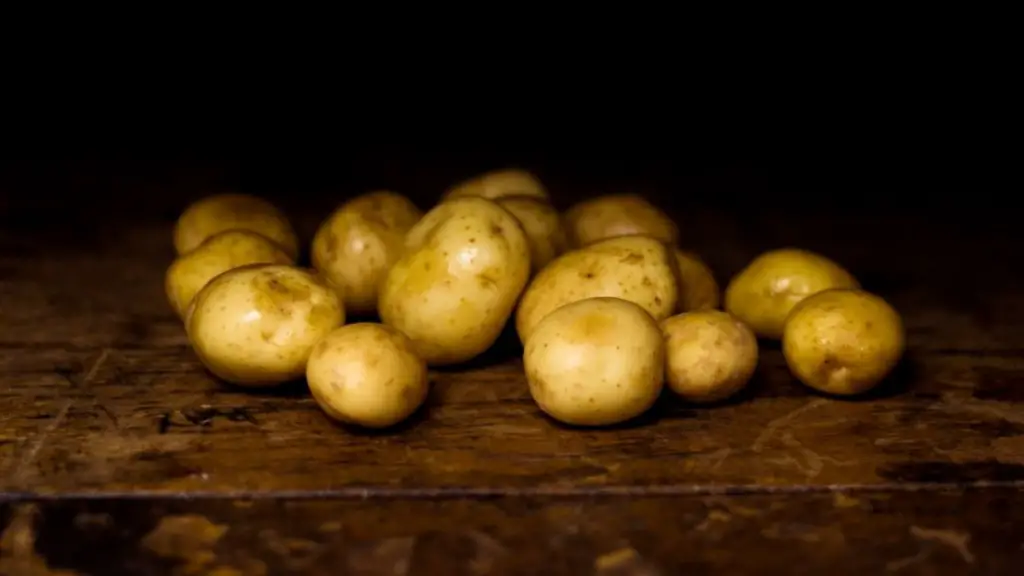So you just bought a really cool knife from a garage sale. Or maybe you accidentally left your favorite knife on the patio table over the weekend while you left on a quick business trip. It doesn’t really matter how it got this way, but know you’re left to deal with removing rust from a carbon steel knife blade.
Luckily, this is completely possible and I’m here to show you how it can be done.
Table of Contents
Different Ways of Removing Rust from a Knife
To remove rust from a carbon steel knife, any material that is acidic enough to separate the oxidized iron from the steel of the blade will do the job. In almost all cases, an abrasive or something else will need to be used alongside the acidic material to help grind the rust from the knife blade.
Baking Soda Method

The best and most effective way that I have found to remove rust from a carbon steel knife blade is with baking soda and a common scrubbing pad.
Supplies needed:
- Water
- Baking soda
- Scrubbing pad or steel wool
- Cloth
- Mineral oil
First, clean the blade of your knife with a non-abrasive cleaning solution and a cloth. Try to avoid having to use water to clean your knife blade, but if you must, use water sparingly and dry very well afterward. If any moisture is left on the blade from a water cleaning, the possibility of more rust forming on the blade of your knife increases dramatically.
After your knife is clean, mix a small amount of baking powder with a little water to form a light paste. Lay your knife on a surface and apply the baking soda paste to one side of the blade. Depending on how much rust is present on your knife, wait between five and thirty minutes before continuing on with the next step.
Once you are ready, take your scrubbing pad or steel wool and scrub the side of the blade that has the baking soda paste on it. Reapply more paste whenever needed until all the rust has been scrubbed off. Once you are satisfied with one side, flip the knife over and repeat the same process to the other side of the blade.
When you have scrubbed both sides of the knife blade and all the rust has been rubbed off, wipe the entire blade with a cloth to remove any rust particles and excess baking soda paste. Apply a light coating of mineral oil to the blade of your knife for extra protection and overall good health of your knife blade. Wipe off any excess oil before continuing on. After wiping the blade down, I suggest you resharpen your knife because scrubbing your blade with abrasive materials can seriously dull your knife.
Vinegar Method
This method has a little more risk of harming your knife than the baking soda method. If your rusty knife is super special or expensive, I suggest skipping this method and using the baking soda method or the method after this one.
Supplies needed:
- White vinegar (other types of vinegar may stain and harm your knife)
- Paper towels
- Sponge
- Cloth
- Mineral oil
Just like the method above, clean your knife – preferably without water – and wipe dry with a cloth. Soak a paper towel in white vinegar and carefully wrap it around your knife blade. Let sit for five minutes at the most. Any more time in vinegar will subject your knife blade to serious harm and permanent staining.
After one to five minutes, remove the paper towel from your knife blade and carefully scrub your blade with a sponge. This method tends to work on more severe cases of blade rust. If this method doesn’t remove all the rust, try the baking soda method to get the remaining amount off.
Once clear of rust, wipe your blade down with a cloth and apply mineral oil. Sharpen your knife after the entire process is complete.
Baking Soda Method (Careful Version)
If the knife that you want rust removed from is very special to you, is expensive or has a nice finish, I suggest using this version of the baking soda method instead of the original. Scrubbing your knife blade with a rough scrubbing pad or steel wool will scratch your blade. While this typically isn’t a problem for most knives, if for any reason you don’t want to scratch your knife blade, using something less rough as an abrasive is necessary.
Follow the steps explained in the original baking soda method, but instead of using a scrubbing pad or steel wool, I recommend balled up aluminum foil or a wine cork. Because these materials are less rough, this will obviously take much longer than if you used steel wool. But preserving a nice finish on a knife is well worth the extra work.
Potato Method

Some people want a more natural solution to removing rust from their knife blade. Hence the potato method. While this method doesn’t work as well as the previous methods mentioned, it significantly reduces the chances of you damaging your knife while removing the rust.
Supplies needed:
- Large potato
- Cloth
- Mineral oil
Take your rusty knife and carefully stick the blade into the potato. Make sure that all the rust present on the blade is fully concealed in the potato. Leave it just like that for around an hour. When the time is up, remove the knife from the potato and gently wipe with a soft sponge.
Once all of the rust is loose on the blade, wipe down with a cloth. Then, coat with mineral oil and sharpen your knife.
Why Do Carbon Steel Knives Rust?
While I don’t have any degree in chemistry, from my research I have found that the simple answer to this question is water and oxygen. When these two things are both introduced to steel, a process called corrosion occurs.
Multiple different types of rust can form when steel is left out in the elements and comes into contact with water and oxygen. The most common type being Fe2O3. While it really doesn’t matter to the average person what type of rust has formed on their knife blade, just knowing the simple fact that leaving your knife exposed to water and oxygen for a period of time will rust your blade is enough information for most.
How Fast Does Carbon Steel Rust?
The rate at which your carbon steel knife will form rust on the blade depends on a lot of different factors. Where the knife is located makes a large impact on the speed of rust formation.
The temperature, weather, humidity, as well as a host of other environmental factors can influence the speed of rust formation on a knife. If exposed to salt as well as other materials that act as a sort of catalyst, steel will rust faster.
The corrosion of carbon steel happens when the humidity of the surrounding environment reaches roughly seventy or eighty percent, and the air temperature reaches above thirty-two degrees Fahrenheit. Impurities in the air and other factors can greatly influence the accuracy of these predictions.
Does Rust Harm or Weaken my Knife Blade?
In most cases, rust will not cause long term harm to your knife. Although if left for long enough a knife will lose some of its strength due to the rust sort of decaying the blade. Often the rust is just on the surface and can be removed using the methods described above.
Rust forming on steel is a completely natural thing, and the main reason that people want to remove it in the first place is that it is sometimes unsightly and can contaminate food if you prepare it with a rusty knife. But in general, rust on a knife blade will cause no harm to the actual tool.
Does Removing Rust from my Knife Blade Harm it?
If done right, the process of removing surface rust from a knife blade should inflict no harm to the knife. However, significant damage can be done to a knife if the process is not done correctly, or if the rust is too severe and has deteriorated the blade.
Many things could go wrong in the process of removing simple surface rust that could cause damage to your blade, especially using the vinegar method. If left in contact with the knife blade for too long, the acidic solution could harm your knife by etching and corroding your blade.
Another possibility that could happen when removing rust from your knife is scratching. If you use steel wool, scrubbing pads, or anything that is rough to grind the rust from your blade, it could scratch and wear away at your knife.
While it is possible to grind down scratches and imperfections in a knife blade, it is an extra hassle that many would really like to avid. A solution to this is the careful baking soda method that uses materials that will not scratch your knife blade when you scrub it.

